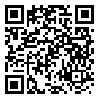Volume 9, Issue 3 (5-2020)
JCP 2020, 9(3): 367-380 |
Back to browse issues page
Download citation:
BibTeX | RIS | EndNote | Medlars | ProCite | Reference Manager | RefWorks
Send citation to:



BibTeX | RIS | EndNote | Medlars | ProCite | Reference Manager | RefWorks
Send citation to:
Nourbakhsh Shourabi S F, Yousefi Kopaei F, Mohammadi Eshkaftaki R. Screening of plant extracts for antibacterial activity against Pseudomonas tolaasii and Ewingella americana, the bacterial pathogens of cultivated button mushroom. JCP 2020; 9 (3) :367-380
URL: http://jcp.modares.ac.ir/article-3-32091-en.html
URL: http://jcp.modares.ac.ir/article-3-32091-en.html
1- Plant Protection Department, Faculty of Agriculture, Shahrekord University, Shahrekord, Iran.
2- Plant Protection Department, Faculty of Agriculture, Shahrekord University, Shahrekord, Iran. ,yousefi@sku.ac.ir
2- Plant Protection Department, Faculty of Agriculture, Shahrekord University, Shahrekord, Iran. ,
Abstract: (2897 Views)
Pseudomonas tolaasii Paine and Ewingella americana Grimont are considered as devastating pathogens in mushroom cultivation. Due to the short shelf life of button mushrooms, safe methods should be used to control these pathogens to avoid any toxic residues on the products. Plant secondary metabolites are assumed as important sources for biopesticides development. The aim of this study was to screen plant species for antibacterial properties against P. tolaasii and E. americana. Antibacterial activity of aqueous extract of 17 plant species on two pathogens was investigated in vitro using the disc diffusion method at 10 and 20 mg active ingredients per disc. Then the effect of extracts possessing antibacterial activity was tested on mycelial growth of button mushroom Agaricus bisporus (Lange) using the disc diffusion method. Analysis through measuring the diameter of growth inhibition zones revealed that the extract of Hymenocrater longiflorus Benth. and the other extracts including H. longiflorus, Achillea millefolium L., Eucalyptus sp. and Teucrium polium L. had significant antibacterial activity on E. americana and P. tolaasii, respectively. However, they had no inhibitory activity on mycelial growth of A. bisporus. The efficacy of four mentioned extracts was evaluated in the control of mushroom brown blotch disease caused by P. tolaasii, in vivo. Assessment of disease severity showed that all four extracts, at tested concentrations, had some level of preventive effect on P. tolaasii with no adverse effects on A. bisporus. It is noteworthy that the strength of the A. millefolium extract at 10% did not differ significantly from the 1% household bleach in reducing the disease severity. Therefore, it is possible that some plant extracts have the power to be considered as alternatives to chemical bleaches. Moreover, findings suggest that H. longiflorus extract is a promising candidate for control of P. tolaasii and E. americana in mushroom cultivation.
Keywords: Agaricus bisporus, brown blotch, internal stipe necrosis, plant extracts antibacterial effects
Article Type: Original Research |
Subject:
Biocontrol of Plant Diseases
Received: 2019/04/17 | Accepted: 2020/04/22 | Published: 2020/05/20
Received: 2019/04/17 | Accepted: 2020/04/22 | Published: 2020/05/20
Send email to the article author
| Rights and permissions | |
 |
This work is licensed under a Creative Commons Attribution-NonCommercial 4.0 International License. |








